One colour. One font. Oh, and grim and grisly health warnings. Is the future plain for food and drink packaging? That’s the fear after Public Health England cited a report looking at plain packaging extending beyond tobacco and into alcohol and HFSS categories. So, how worried should brands be?
In April tobacco made one last-ditch attempt to save itself. Uniform packs stripped bare of branding and left with grisly health warnings would infringe the human and intellectual property rights of multibillion-pound conglomerates, whined the likes of British American Tobacco, JTI and Philip Morris International before the Supreme Court, mere weeks before plain packaging was set to roll out across the UK.
Judges had scant sympathy. Rejecting any right to appeal the new law they gave the final green light for drab brown cigarette packs to hit shelves five weeks later, hidden in dark cupboards, with only pictures of rotting lungs and wheezing kids for company.
Tobacco bosses surely wept as their final attempt was rejected, despite throwing millions at the courts.
By contrast, with a precedent now set to render branding obsolete, the health lobby has been emboldened to go further. It could come for booze, chocolate, crisps, fizzy drinks. Anything and everything bad for Brits’ health, in fact.
Why intellectual property (really) matters
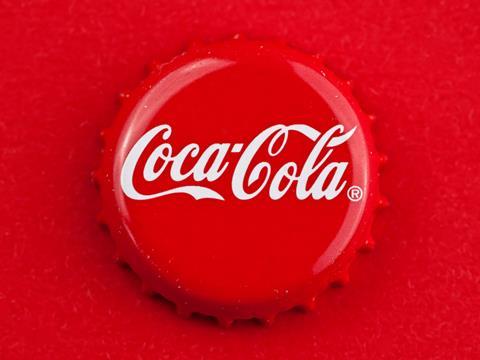
It might sound dull. But intellectual property can be worth more to a brand’s bottom line than an entire year of sales. Take Coca-Cola. Perhaps the most iconic fmcg brand in the world, its trademark (the name, script and colour) is estimated to be worth between $20bn and $70bn depending on whom you talk to. That isn’t a one-off, either. The Walmart trademark is worth $32bn says Forbes. Google? $44.3bn.
“In the free marketplace you register your trademark and then have the right to use it, and stop others using it,” explains Alan Hunt of Lewis Silkin. “By restricting that use with plain packaging there have been arguments you’re seeking to restrict branding rights.
“These legal challenges haven’t been successful to date” when broached by tobacco but “tobacco was more clear cut because it’s hard to argue against its impact.
“When we move towards food products, it raises so many questions I think the government would struggle.”
At least that is the growing fear among food and drink brands after Public Health England briefly cited a report that recommended plain packaging in December 2016 going beyond tobacco and into the drinks aisle.
But there is someone left to speak out. In fact, so concerned are some at the prospect of a government clampdown on the colour and character in UK supermarket aisles, they’ve banded together to form campaign group Endangered Species.
Made up of brands, manufacturers and designers, the body is looking to head off the malign threat, says founder Ron Cregan, a designer and brand consultant. “PHE is a pretty serious and important body, and when they say something a lot of notice is taken of it. Unless brand owners are proactive, then you risk government acting in this lumpy way and enforcing strategy. Whether sugar or alcohol, I do believe change will happen.”
Are they right to be worried? Could the iconic packs of some of Britain’s biggest, boldest brands soon be on the chopping block? On the one hand, all this controversy could simply be embittered tobacco companies whipping up trouble behind the scenes. That’s what Stevie Benton, Action on Smoking and Health spokesman, suggests. “They’re trying to discredit the idea and drum up resistance against a problem that doesn’t exist,” he says.
PHE is adamant all the fuss is over nothing, too. “Our recent comprehensive Alcohol Review didn’t identify any evidence around plain packaging of alcohol” and as an evidence-based organisation it isn’t about to recommend it to government, it insists. Similarly, the Department of Health say there are no plans to consider plain packs for either booze or junk food.
Cigarette-style warnings
But much as PHE might regret the storm of controversy whipped up by its one-line reference to a study into plain packaging last year, this wasn’t the first time a clampdown on booze packaging has been touted.
In 2012, the UK Faculty of Public Health said chronic rates of harmful drinking should prompt cigarette-style warnings of cancer, infertility and violence to be splashed on bottles of beer, wine and spirits. “This is not the nanny state. This is simply to help the public understand the risks,” insisted spokesman Professor Mark Bellis.
Existing labels on booze simply don’t do the job, found a study by St Mary’s University in 2013 (the same study cited by PHE to much furore three years later) with warnings on bottles “poorly visible” and “ambiguous”. Plain packaging should be considered, according to author Mohammed Al-Hamdani, to discourage binging on booze and banish its allure.
For all the desperate claims by tobacco that there is no evidence to show plain packs discourage purchase, early signs show it is already doing just that. In September, three months into the ban on branded packs, Booker reported a 10% fall in sales of cigarette and tobacco products, with some convenience retailers already swapping in premium spirits or gifts to valuable spots behind the till.
How tobacco fought (and lost) against plain packs
It was a decade ago that ex-JTI consultant Jeremy Blackburn first heard plain packaging for tobacco touted. “It was during the consultation for the smoking display ban - the statement came from a Labour health minister,” he remembers.
“They’d introduced an advertising ban in the early 2000s. Then there were health warnings on packets. Then the display ban. Then came plain packaging. And in the midst of all that was the smoking ban in public spaces, of course.”
In other words, a decade-long onslaught against smoking (which kills 100,000 Brits each year) with 62% of the public behind it.
Tobacco giants didn’t go down without a fight, though, suffering three crushing defeats in court as they challenged the legality of the move. “It was the IP rights, the lack of evidence, concerns about the illegal trade, the potential for commodification and the very stretch of brands and consumer choice,” says Blackburn. “All arguments that fell on deaf ears.”
It “shows that removing glitzy visual tobacco branding and focusing on the disastrous health impacts of smoking has been an important public health measure” says ASH chief executive Deborah Arnott.
Five years into the same regulatory change, Australia is seeing results too, with 108,000 fewer smokers since plain packaging came into force (though that’s only 0.5% of the total lighting up). “People are more likely to try and quit, buy fewer cigarettes and change their behaviour, such as being less likely to leave cigarettes in a public space,” adds Benton. “But in terms of how it might work in other sectors we don’t really have a view on that.”
Layering of legislation
Quite. Undoubtedly booze and junk food are far less clear-cut than tobacco in the court of public opinion. “Smoking is detrimental, whether you smoke 10 or 100 a day it’ll do you and the people around you harm. Whereas drink, as long as you’re responsible and not fighting at weekends, in moderation it doesn’t seem to be too much of a problem, so you’re punishing everybody because of a few,” says Pete Hayes, director at design agency PB Creative. The same goes for sugar, salt and fat.
“An occasional walnut whip is very unlikely to finish you off,” says Jon Stevens, MD at Threesixty Design. Yes, “sugar has been proven to be highly addictive. Perhaps more addictive to some than others. Does that mean the state should intervene and enforce standardised, probably arresting and distressing warnings on food packaging? That’s definitely a nanny state step too far for my liking.”
The same view was espoused time and time again in the run up to the tobacco plain packaging regulations (see box, right) but to little effect. And for Jeremy Blackburn, a former consultant for JTI at that time, some of the rhetoric of the current health brigade looks all too familiar.
“Many of the current people involved in the sugar debate were also involved in the tobacco discussions over the last 20 years,” he says. “There are some familiar names starting to appear.
“The heavy flow of anti-sugar feeling and the media commentary you read is very familiar to some of the initial stages of the tobacco debate.”
Already there are signs of a “layering of legislation” that echoes the pattern of activity in the run-up to plain packaging for tobacco, he goes on.
For Fry, plain packaging doesn’t have to mean packs stripped of all personality, either. “I’m talking about absolute insistence on packaging that tells the customer very quickly and simply what the sugar content might be. When it comes to any type of high sugar, fat or salt it needs to be very plain how much of each ingredient is in there.”
That way, industry keeps the wolf from the door. But “if people can’t do a 20% reduction in sugar, if they can’t meet the salt target or take part in the calorie programme starting next year, if they can’t do better marketing… I think plain packaging should be in our back pocket,” says Jenner.
“If you were starting a chocolate brand and all you could do was sell it in a standardised pack, how do you build brand awareness?”
For booze, the 2011 Public Health Responsibility Deal saw 80% of alcoholic drinks containers already (voluntarily) slapped with a health warning and from 2013 new stricter rules around marketing came into force from the Institute of Alcohol Studies.
Meanwhile, the sugar tax is set to come into force in 2018, adding up to 24p per litre for soft drinks. Government plans to remove 200,000 tonnes of sugar from the UK market were published in March and new stricter ad rules also kicked off in July.
With this in mind, “all trademark owners should be concerned about the precedent that removing IP rights for tobacco products means for the future of their brands” adds Blackburn.
And that would be a “sad day for packaging design agencies as well as brand houses themselves that have spent centuries in some cases forming and telling this narrative about the provenance of their brands” says Hayes. “If all this gets wiped out you’d struggle to see where they’d go from there.”
Lifeblood of brands
Stripped of colour and creativity and plastered with dire warnings, “you’d lose the essence of what these products are” adds Elliot Wilson, strategy director at The Cabinet Agency. “Alcohol for one is all about provenance, heritage, that’s the experience. Put to one side people wanting to get pissed, for responsible adult consumers they’re buying into layers of story, provenance, place, history, heritage. It would remove masses of what gives consumers satisfaction, pleasure, reassurance.”
So embedded is the subconscious link between the look and feel of a pack, and what it contains, that coffee can taste 27% more bitter, and beer 6% stronger depending on its packaging, a US study found last month, with our judgement of a product formed in less than 90 seconds of spotting it on shelf.
As a result “pictures of rotting teeth on confectionery could be the nail in the coffin for some products” believes Neil Davidson, managing director of HeyHuman. “On-pack promotions and limited-edition packs are the lifeblood of brand activity in some sectors. Removing this call to action would kill off brand dynamism in many sectors such as breakfast cereals, where regular hard-hitting promotional activity is almost part of the proposition.”
On shelf isn’t the only place brands would be kicked. The move could strip away valuable intellectual property rights and trademarks worth billions (see box, left).
“The hardest pill to swallow is the government being able to remove IP ownership from brands at the flick of a pen,” says Elliot. “Whatever you think of the tobacco companies, that’s what’s happened to their business - a perfectly legal product, albeit understood to have health dangers attached. But those are very valuable assets that have just been wiped away.”
National Obesity Forum spokesman Tam Fry has little time - or sympathy - for that argument. “My brief is not to argue on behalf of brands and industry,” he says. “We have allowed industry such latitude as to put 38g of sugar into a 100g pack of cereal, which is criminal, and they’ve built up the brands everyone loves on the basis of that. I’d think now is the time to drive a coach and horses through that.”
It isn’t only the likes of Coca-Cola and Cadbury that will be irreparably damaged, though. In fact the brands we know and love will be least affected. “You effectively hand over a monopoly to the established brands,” says Hayes. “Any new contenders, you can’t make dispensations for them, so they’re doomed to failure.
Who could be in the firing line?
Alcohol
Fears that plain packaging would be extended began in December 2016 when PHE (perhaps unwisely) cited an academic study recommending it for booze. “Like cigarettes, alcohol is a social drug,” it concluded, associated with existing labels failing to “have a strong effect on recall, perceptions and behaviours”.
Soft drinks
It might have been coined ‘the sugar tax’ by tabloids but the new government tax set to roll out from 2018 is technically the Soft Drinks Industry Levy targeting the makers of soda, smoothies and sweetened juices. With this move government has made abundantly clear it has the category firmly in its sights for regulation.
Snacks
Stretching new targets for the salt content of crisps and snacks came into force this year with “considerable reduction required” to curb the average 8.1g consumed daily by Brits, said the FSA. Proactive change is happening, though, with more than 11 million kg of salt removed since 2007.
Confectionery
Barely had the Tories reassured campaigners soft drinks would be taxed up to 24p per litre than Action on Sugar turned its attentions to confectionery, calling for the levy to be extended. Chocolate and sweets must be tackled with “tougher measures to ensure products are not heavily marketed or promoted” it said.
For example, the entire craft movement has been built largely on the back of anarchical, eyecatching design to distinguish itself from established names. “If you were starting a chocolate brand say and all you could do is sell that in a standardised pack, in a standardised colour, how do you create brand awareness? It’d be absolutely impossible,” says Alan Hunt, senior associate at Lewis Silkin. Not only that but “it’s easier to produce counterfeits as there are no distinguishing features”.
Lack of evidence
All this and it may not even work. Take booze. “From a shop shelf perspective, the story, the branding, the way the pack looks, and its provenance and heritage is the thing that evokes an emotion in the consumer,” says Hayes. “Without all that you run the risk of making all alcohol simply booze, which arguably could make matters worse. It becomes a generic drink that you’re buying just because it’s alcohol.”
Even Action on Sugar campaign director Katherine Jenner has doubts. “There are several problems with plain packaging or high warning labels that may not lead to the changes we’d want to see,” she says. “Labelling on the whole, in terms of behaviour change, only tends to affect those who are better educated or have time to make a decision about their food, or are well aware of the health reasons for it.
“They may even have the unintended consequences of people choosing those foods because they know they’re bad for them. Or it may put people off supermarket food when it’s better than the local takeaway.
“It’s all hypothesis because we simply don’t know, there’s not been the research done on it.”
Not that a lack of evidence held back the government before - at least according to the tobacco companies. “Obviously we appreciate there are many industries that divide opinion including tobacco but we deserved the right to a balanced debate,” says Blackburn, and “when we were in the process our frustration was nobody was taking time to look at the evidence of impact. It was very one-sided.”
Of course, it’s tricky to summon up too much sympathy for the multibillion-pound conglomerates behind 60 million smoking-related deaths each year, but this should act as fair warning to the food and drink industry to get a head start and be proactive.
“The creative industry could be much better at helping brand owners communicate the way products should be consumed,” believes Cregan. “Whether sugar or alcohol, I do believe change will happen, and I’d like brand owners and creative industries to be proactive and use skill sets they have to help government legislate better. That way we don’t get very simplistic health warnings, or graphic skull and crossbones, and whack it on a product, because of sugar or alcohol content.”
Davidson adds: “Brand marketers in fmcg need to start doing their homework. They need to wake up to the threats posed by plain packaging and find new and inspiring ways to market products. The legislation runway is shorter than with tobacco and things could change rapidly.”
Opportunities to allay the health brigade are already out there, with voluntary salt and sugar reduction targets, marginally intrusive on-pack labelling by way of traffic lights, or less grisly health warnings. Plainly speaking, consider yourself warned.
Plain packaging: who's next?
- 1
 Currently reading
Currently readingPlain packaging: who's next?
- 2
- 3









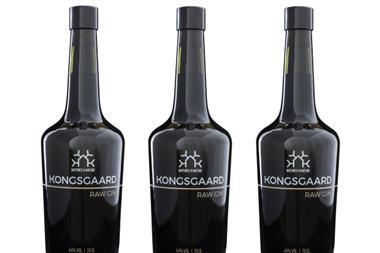
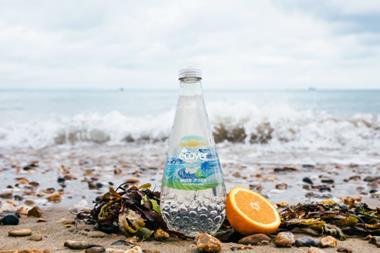
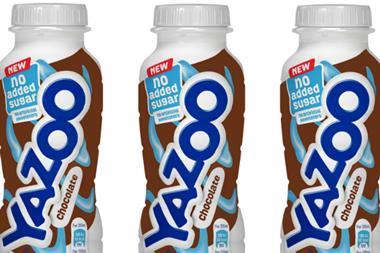
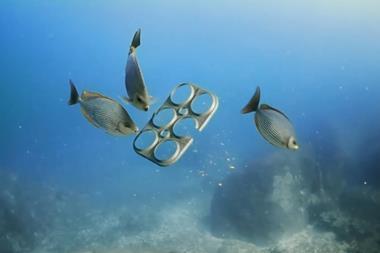
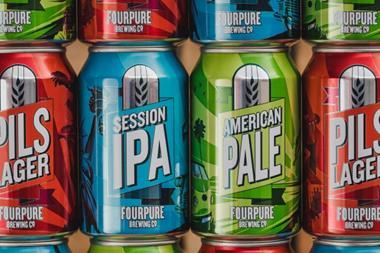




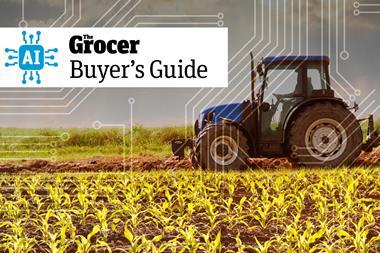


1 Readers' comment